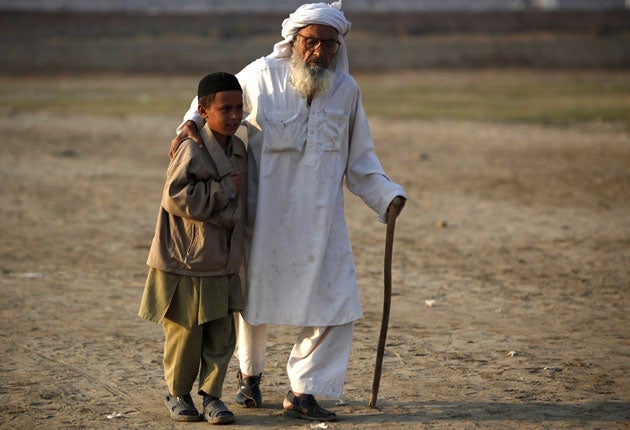Pakistan presses the Taliban in its lawless heartlands
Despite advances on the ground, Hillary Clinton's visit last week showed up tensions with the US

Your support helps us to tell the story
From reproductive rights to climate change to Big Tech, The Independent is on the ground when the story is developing. Whether it's investigating the financials of Elon Musk's pro-Trump PAC or producing our latest documentary, 'The A Word', which shines a light on the American women fighting for reproductive rights, we know how important it is to parse out the facts from the messaging.
At such a critical moment in US history, we need reporters on the ground. Your donation allows us to keep sending journalists to speak to both sides of the story.
The Independent is trusted by Americans across the entire political spectrum. And unlike many other quality news outlets, we choose not to lock Americans out of our reporting and analysis with paywalls. We believe quality journalism should be available to everyone, paid for by those who can afford it.
Your support makes all the difference.White smoke rises across a deep gorge. The screeching whistle of mortar fire echoes in the valley as troops target militants five miles away. The sky buzzes with Cobra gunship helicopters.
This is the front line of Pakistan's war on terror. Two weeks into its assault on the Taliban's heartlands, the army has edged east and claims it is poised to make fresh gains against hardened central Asian and Taliban fighters hunkered down in the Kaniguram valley, faintly visible in the distance.
This arid vista became the first window on the war as the authorities used helicopters to give journalists a rare look at the borderlands that have long been suspected to serve as sanctuaries for the Pakistani Taliban and al-Qa'ida's senior leaders. Military commanders say the toughest challenge lies ahead, in what has been called the "triangle of militancy".
The army claimed yesterday that soldiers had mounted the hills around Sara Rogha, one of three Taliban strongholds. The clashes brought the estimated deaths to 289 militants and 34 soldiers. The army is advancing in three directions and is set to meet around the towns of Makeen and Laddha.
The last operation was aborted after the army's fort at Laddha came under sustained attack. But this time, as they seek to crush an estimated 8,000 Taliban previously loyal to the slain commander Baitullah Mehsud and up to 1,000 al-Qa'ida fighters, they have advantages. CIA drones have collected crucial surveillance intelligence. Meanwhile, the departure of more than 155,000 refugees from the area over the past month has reduced the likelihood of civil- ian casualties, although ordinary people could yet be used as human shields.
Last week's visit by the US Secretary of State, Hillary Clinton, her first since the Obama administration assumed office earlier this year, was designed to strengthen ties between the two countries and to ease public anger towards many aspects of US policy.
Mrs Clinton succeeded in charming many senior journalists who questioned her and she was prepared to admit America's past mistakes. However, not everyone was convinced. Talat Hussain, a leading news anchor who took part in a round-table interview with her, said she had ignored many of the areas that cause disgruntlement – including alleged Indian interference in Pakistan. "The charm offensive is fine, but she is operating in a totally different orbit. The issues that are causing problems between the US and Pakistan fall in a different [area]," he said. "The issue is that the US has a policy and Pakistan finds it problematic."
The coming few weeks, with the looming prospect of winter snows, will be crucial in the battle against the militants. There is no clear idea of the whereabouts of the new leader, Hakimullah Mehsud, although there are unconfirmed reports of him hiding on Preghal in the Badr valley, South Waziristan's highest peak.
Yet even if troops manage to clear this rugged landscape, preventing it slipping back into militant control will be difficult. At the same time, militants will continue attacks on public and establishment targets to try to break the public consensus in support of the military operation.
For now, however, the military exudes confidence. "They have given a good fight," General Rabbani said of the fighters his troops have engaged. "[But] many are being killed, and others are going deeper into the territory."
Join our commenting forum
Join thought-provoking conversations, follow other Independent readers and see their replies
Comments